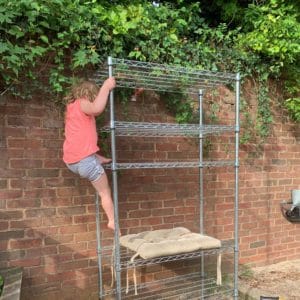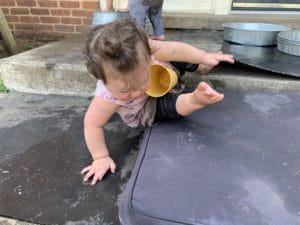Now is not a good time to go to the emergency room
 Invitation to Dig Deeper: Comment, “Now is not a good time to go to the emergency room.”
Invitation to Dig Deeper: Comment, “Now is not a good time to go to the emergency room.”
It may have just come out of your mouth. Your child was doing something risky and you thought, “Now is not a good time to go to the emergency room.” So you said it. You’re not a bad parent, but I don’t recommend saying that and here is why.
It is not children’s responsibility to regulate the status of the emergency room. It is your job to keep them safe, period. If you know me, you know I’m not trying to say you’re a bad parent if your child gets a scratch, or even a broken arm. You’re not. I’m talking about a felt sense of safety. This felt sense of safety includes physical, emotional, and social safety. It’s an essential element to a secure attachment. That safety builds security and allows children to focus on learning to be a friend, read, talk, and learn. You are responsible for regulating your child; for teaching them the adults around them have things under control and it is safe to be a kid. Saying, “It’s not a good time to go to the emergency room,” doesn’t do that.
If you have a teenager, it’s different. They are older and are able to hold the bigger picture of the consequences of their decisions. Young children (under ten or so) cannot. This statement only serves to increase their anxiety. If you don’t feel comfortable with something your child is doing because of the current state of the emergency room (be it covid19 or mardi gras), you have the full authority to draw a boundary and stop your child. As you child climbs, swings, or takes other normal childhood risks, do not put this crisis on them. If you find yourself thinking, “Now is not a good time to go to the emergency room,” then ask yourself a couple of questions to get clarity.
If this play continues, do I think it could result in a visit to the emergency room? Could we just first aid this at home?

If the risk is more than a bump, scratch, scrape, or bruise, then you need to ask yourself,
Do I feel like this play is going to result in injury? Do I feel comfortable with them taking this risk right now?
If not, then say that. “You know buddy, I know sometimes you climb the trees way up high, but today isn’t the day for it. We can make a plan to do that in a couple weeks. You could climb and jump on the front porch if you’d like.” Done. All you need to do is draw the boundary with confidence.
When you say, “It’s not a good time to go to the emergency room,” most children take what you say to heart. They will feel scared, anxious, and probably quite confused.
What does that mean; if I get hurt will there not be a doctor for me? Is this safe? Will my trusted adult keep me safe or am I on my own?
Children are faced with making a decision and holding a problem that is far too big for them to hold. They cannot understand and don’t know what to do. They may wonder:
Does that mean I shouldn’t climb? What if I fall, will you help? I want to climb, but if I climb is that bad? Will it displease you?
This is how anxiety manifests.

It is our job to keep our children safe. It is their job to help keep it safe by heading your guidance. “Now is not a good time to go to the emergency room,” is NOT clear guidance. “Use your hands and feet to climb,” is clear. “Hold my hand in the parking lot,” is clear. “Look both ways to cross the road,” is clear. When we tell children, “It’s not a good day to go to the ER,” we are not giving them any usable information with which to make a decision. We are leaving in their hands a decision that is not theirs to make. We decide what is safe, and we give them guidance as to how to keep it safe. If it’s not safe, stop it. If you’re worried, figure out what you need.
Do you just need to calm yourself because it’s stressful? Do you need to move closer and supervise the play? Or do you need to stop it?
Now more than ever, our children need our calm confident leadership. They are looking to you for safety. Your job is to communicate. “I will keep you safe and you will help me keep it safe.”

Clear guidance for risk taking sounds like:
-
Be mindful of your hands and feet when climbing.
-
I feel nervous so I’m moving closer to you.
-
That looks too wobbly to climb on. Climb down. You could climb on (this) instead.
-
That board is getting close to the edge it could fall.
-
Be mindful of where your friends body’s are.
Kids are super resilient, so don’t worry if you’ve already mentioned the ER to them. Next time it pops in your head, try those reflection questions. If your kid asks about it, try to quell their anxiety and re-establish that deep safety. Most importantly, keep reflecting; parenting is hard. HEY, you’re not alone; we are here to be learning partners!
We give credit for the phrase “It’s my job to keep you safe, and your job to help keep it safe,” to Conscious Discipline and recommend it as a resource to families and teachers.
Categories: Risk Competence
Tags: adult-child interactions, anxiety, Conscious Discipline, safety
